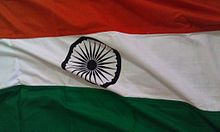Flag Code of India:

On July 22, 1947, the National flag of India was adopted in its present form (horizontal rectangular tricolour) during a meeting of the Constituent Assembly, 23 days before India’s Independence, and became the official national flag of the Dominion of India on August 15, 1947.
- Present flag is based on the Swaraj flag, a flag of the Indian National Congress designed by Pingali Venkayya.
- After undergoing several changes, the Tricolour was adopted as our national flag at a Congress Committee meeting in Karachi in 1931.
- Art 51A(a) – To abide by the Constitution and respect its ideals and institutions, the National Flag and the National Anthem.
Statutes Governing Use of Flag:
- Emblems and Names (Prevention of Improper Use) Act, 1950.
- Prevention of Insults to National Honor Act, 1971.
Rules governing the display of the Tricolour:
- The Flag Code of 2002 is divided into three parts:
- 1-a general description of the tricolour
- 2-rules for display of the flag by governments and government bodies.
- 3-rules on display of the flag by public and private bodies and educational institutions.
The National Flag of India shall be made of hand spun and hand woven wool/cotton/silk khadi bunting.
- The National Flag shall be rectangular in shape. The ratio of the length to the height (width) of the Flag shall be 3:2.
- The Flag shall not be flown at half-mast except on occasions on which the Flag is flown at half-mast on public buildings in accordance with the instructions issued by the Government.
- The Flag shall not be used as a drapery in any form whatsoever, including private funerals except in State funerals or armed forces or other paramilitary forces funerals”.
- The Flag shall not be used as a portion of costume or uniform of any description nor shall it be embroidered or printed upon cushions, handkerchiefs, napkins or any dress material.
- The “Ashoka Chakra” is the wheel of the law of dharma. Chakra intend to show that there is LIFE IN MOVEMENT and death in stagnation.
- The saffron color denotes renunciation of disinterestedness.
- The white in the center is light, the path of truth to guide our conduct.
- The green shows our relation to the soil, our relation to the plant life here, on which all other life depends.




